The Spirit of Plants Hidden in Watercolor: Hilma af Klint's Exclusive Exhibition at MoMA in New York

In the art world, stories often resemble those found more in literature than in museum catalogs. Hilma af Klint, a Swedish artist whose work has long been overshadowed, now fascinates both art historians and spiritual seekers of meaning. The latest exhibition at MoMA in New York, titled "What Stands Behind the Flowers," reveals a previously unknown side of the artist, portraying her as a keen observer of nature who was able to connect the world of flora with the spiritual dimension.
For many years, Hilma af Klint was known only to a small circle of esoteric art enthusiasts. It was not until the 2018 exhibition "Paintings for the Future" at the Guggenheim Museum that she returned to the artistic world. It was then that a true renaissance of interest in her work, particularly her spiritual approach to art, began. However, the latest exhibition at MoMA goes a step further, presenting Hilma not only as a mystic but also as a profound explorer of the natural world.
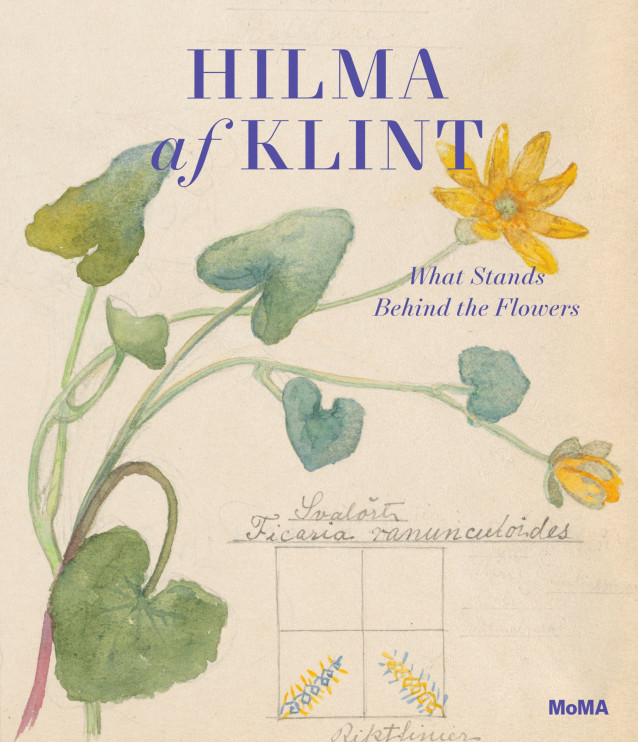 Hilma af Klint: What Stands Behind the Flowers - The Museum of Modern Art, New York, 2025 / press materials
Hilma af Klint: What Stands Behind the Flowers - The Museum of Modern Art, New York, 2025 / press materialsThe exhibition focuses on the years 1917-1922 – a pivotal period in the artist's life, which she devoted to exploring the natural world. The exhibition opens with works from the 1917 "Atom" series, which feature the familiar geometric form from the artist's earlier abstractions , but this time set in the context of Swedish nature – its plants and animals.
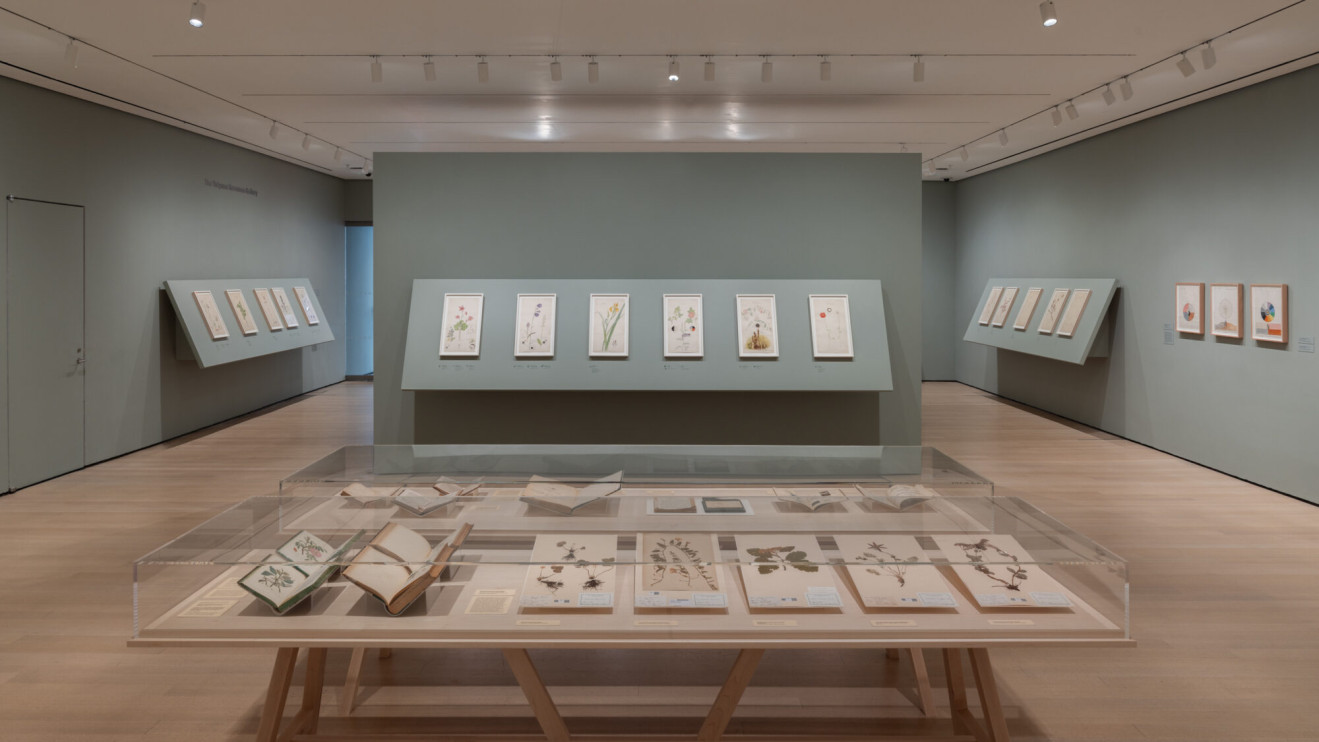 Hilma af Klint: What Stands Behind the Flowers exhibition at the Museum of Modern Art / MoMA press materials, photo: Jonathan Dorado
Hilma af Klint: What Stands Behind the Flowers exhibition at the Museum of Modern Art / MoMA press materials, photo: Jonathan DoradoThe centerpiece of the exhibition is the "Nature Studies" series—46 precise drawings of plants and flowers, made between 1919 and 1920. It's a kind of artistic atlas of botany, but one with a unique character. Af Klint didn't limit herself to merely depicting the shapes of leaves and petals. Alongside the drawings appear abstract symbols: spirals, zigzags, and circles, as well as words and descriptions such as "innocence," "silence," and "strength." These are not scientific classifications, but intuitive readings of the emotions and energy of a given species.
 Hilma af Klint: What Stands Behind the Flowers exhibition at the Museum of Modern Art / MoMA press materials, photo: Robert Gerhardt
Hilma af Klint: What Stands Behind the Flowers exhibition at the Museum of Modern Art / MoMA press materials, photo: Robert GerhardtThis approach makes these works unique—balancing on the border between science and intuition, analysis and spiritual reflection. It could be said that Hilma has created not only a botanical journal but also an energetic portrait of nature. The works also feature the artist's commentary, supplementing her vision: "I have shown that there is a connection between the world of plants and the world of the soul."
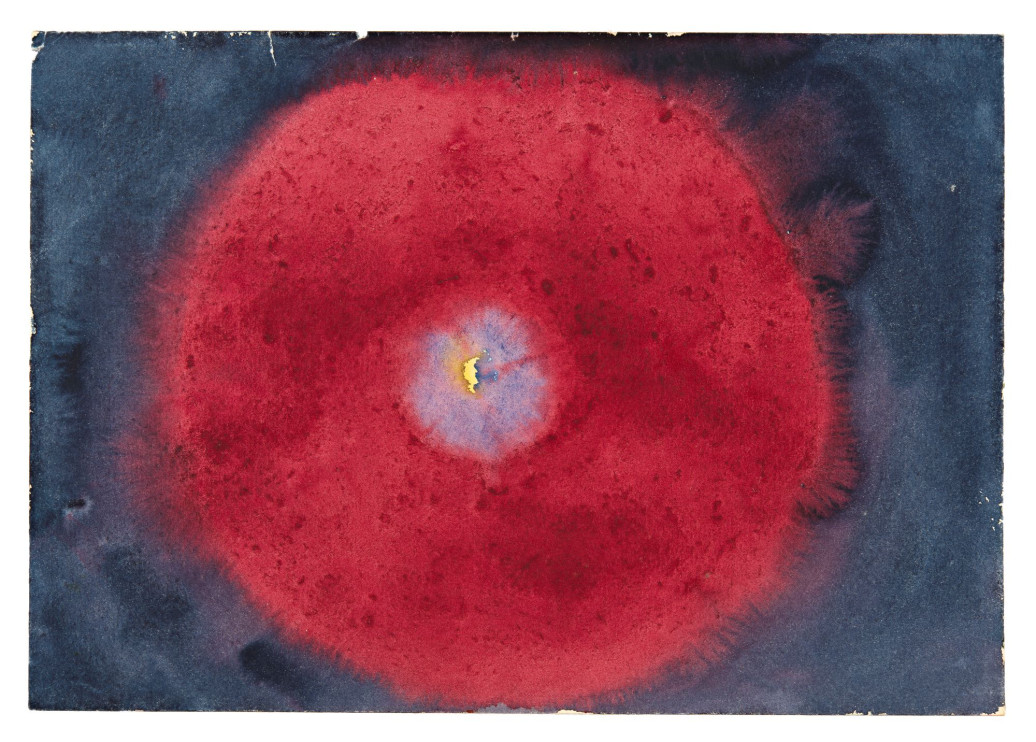 Hilma af Klint. Birch from the series On the Viewing of Flowers and Trees. 1922. Watercolor onpaper / MoMA press materials, property of Hilma af Klint Foundation, Stockholm (HaK 639)
Hilma af Klint. Birch from the series On the Viewing of Flowers and Trees. 1922. Watercolor onpaper / MoMA press materials, property of Hilma af Klint Foundation, Stockholm (HaK 639)
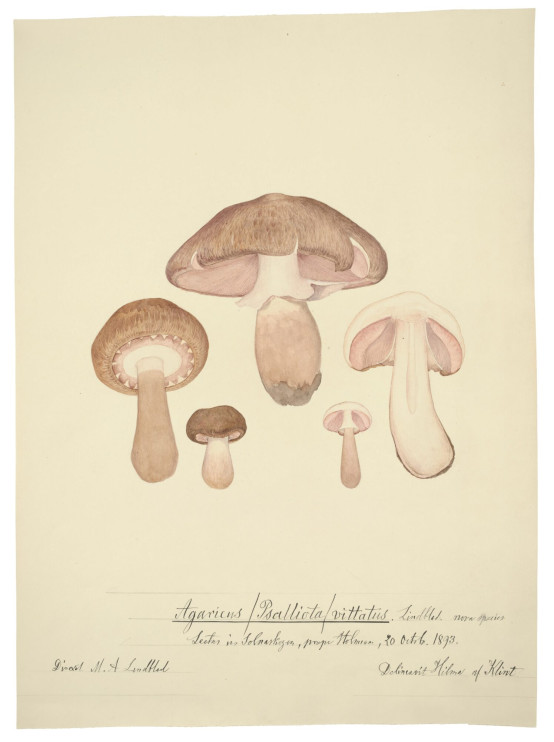 Hilma af Klint. Probably Agaricus bisporus (Cultivated mushroom). c. October 20, 1893. Watercolor, gouache, pencil, and ink on paper / MoMA press materials, property of Naturhistoriska Riksmuseet, Stockholm. MA Lindblad Archive
Hilma af Klint. Probably Agaricus bisporus (Cultivated mushroom). c. October 20, 1893. Watercolor, gouache, pencil, and ink on paper / MoMA press materials, property of Naturhistoriska Riksmuseet, Stockholm. MA Lindblad Archive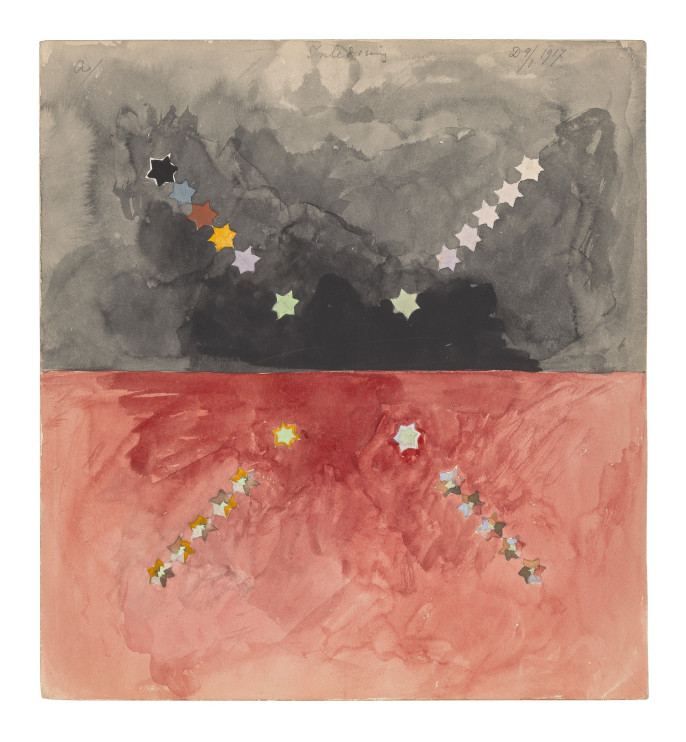 Hilma af Klint. No. A from The Atom Series. January 9, 1917. Watercolor, pencil, and metallic paint on paper / MoMA press materials, property of the Hilma af Klint Foundation, Stockholm (HaK 351)
Hilma af Klint. No. A from The Atom Series. January 9, 1917. Watercolor, pencil, and metallic paint on paper / MoMA press materials, property of the Hilma af Klint Foundation, Stockholm (HaK 351)



